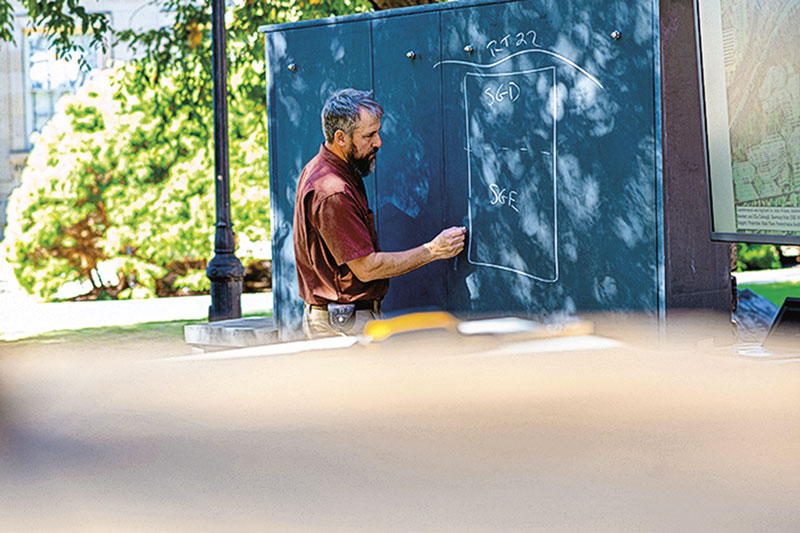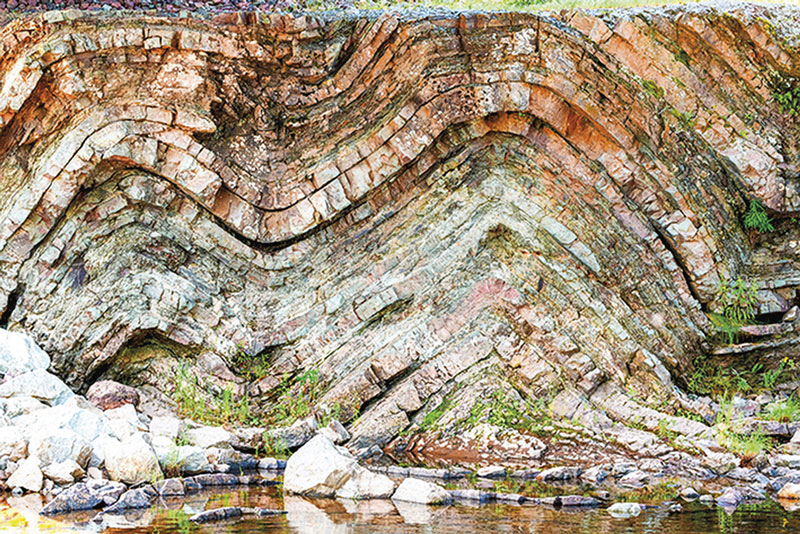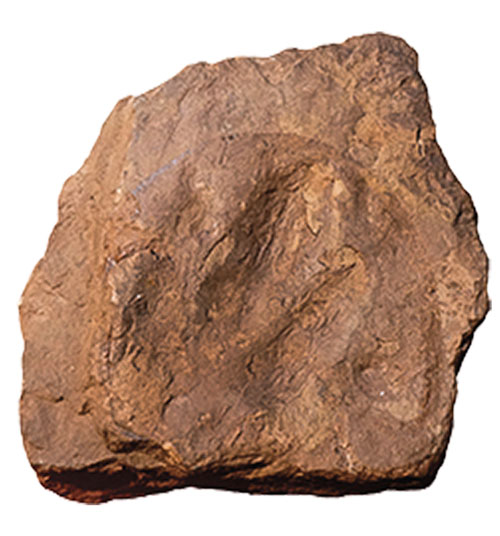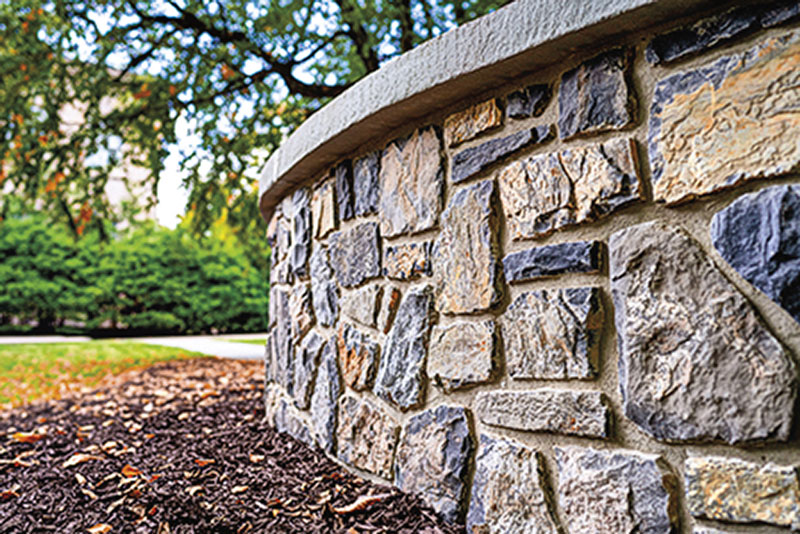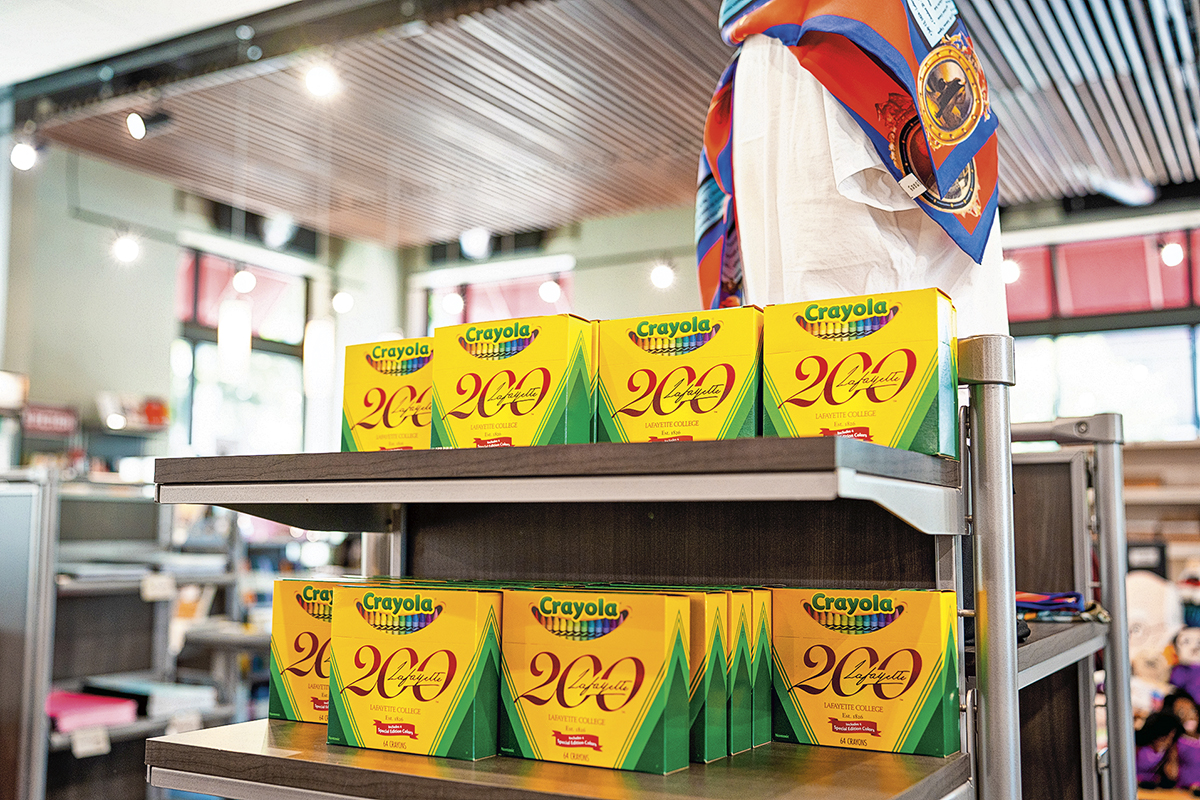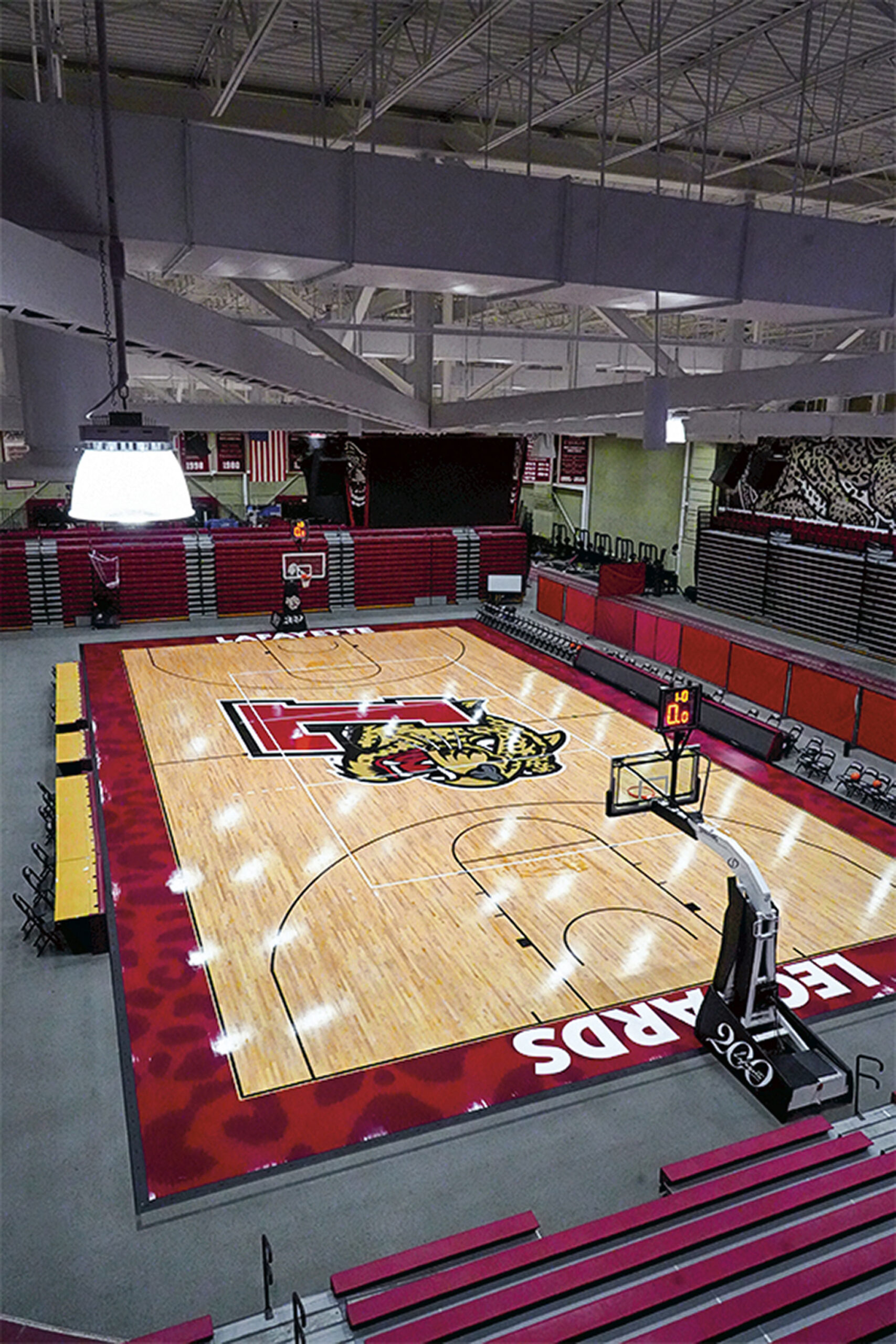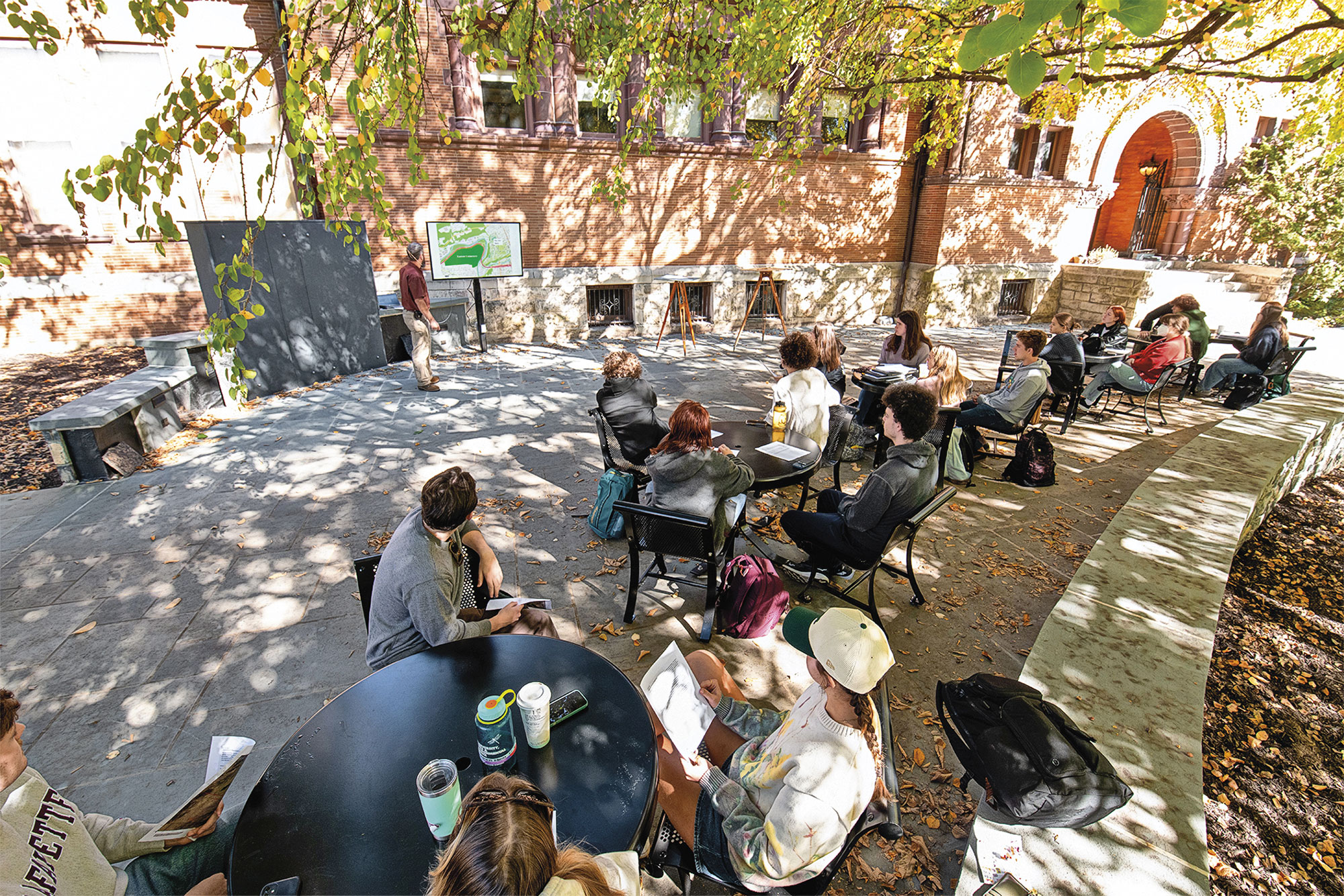
Photographs by Adam Atkinson
Van Wickle’s outdoor classroom
A stone-filled terrace recently debuted, offering a new learning environment for students.
This fall, beneath the canopy of a katsura tree on the south side of Van Wickle Hall, geology and geosciences faculty and their students gathered on a newly installed bluestone terrace. Studying the earth, after all, is better outside.
The outdoor classroom isn’t a very common thing to see on a college campus, says David Sunderlin, John H. Markle Professor of Geology and department head, and certainly one that’s as geologically themed as this space. Sunderlin credits his creative colleagues for developing the teaching terrace, which was made possible with generous support from Dr. Charles E. Bartberger ’67 and his wife Gretchen Platt. “Geology is the study of a lot of outdoor phenomena,” Sunderlin says, “so we might as well be outside, experiencing it.”
When the Geology and Environmental Geosciences Department isn’t holding class here, the patio transforms into a natural place to congregate. “To be able to have not just an outdoor academic space, but also a place for a leisurely lunch while being surrounded by these wonderful geologic references really captures the spirit of Lafayette,” Sunderlin says.
Lawrence Malinconico, associate professor of geology and geophysics, adds that the outdoor classroom supports the department’s outreach. “We try to show people who we are and what we do,” he says. “This facility is one more thing for people to ask, ‘What are they doing?’”
Here are some of the special details in the design.
1.
The most pronounced feature is dedicated to instructing. A large chalkboard made from locally quarried slate is situated next to a weatherproof video monitor that’s used for curriculum presentations.
2.
Rocks around the edges of the terrace demonstrate the phenomena of folding—a geologic process that forces layers to bend and permanently deform due to outside pressure—and help students prepare for detailed field lab experiences.
3.
Within the next year, a series of dinosaur tracks will be etched into the patio to emulate fossilized footprints.
4.
To study more samples, students can wander to the nearby rock and gravel gardens located on the north and east sides of Van Wickle Hall. The 16 boulders that populate the Pennsylvania rock garden, for example, were donated by local and regional quarries, masonries, and building material companies, and trace the rich geologic history of the state.

